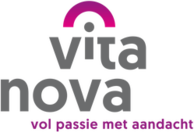Breast infection
Any woman who breastfeeds can get a breast infection. This is an inflammation of the milk ducts. In most cases, breast infection is preventable: get used to frequently checking your breasts in a mirror in the period that you’re breastfeeding. Clean your breasts and take good care of them. This means frequently changing breast pads, caring for nipple cracks and regularly changing position while feeding.
What causes a breast infection?
Breast infection can be caused by one or more of the following causes:
• nipple cracks;
• engorgement, too much milk;
• weakened immune system;
• poor hygienic care.
What other symptoms are involved?
Women may get a sudden fever, rising to 40 degrees Celsius! In addition, often red blotches will appear on the breast, they make looks shiny or glossy, they feel painful and possibly a difficult or low flow of milk.
How can breast infection be treated?
In case of a breast infection, it’s important that the infected breast is completely emptied. Either attach your baby or use a breast pump.
It’s best to start with putting a warm cloth on the breast to help the milk ducts become a bit more supple and flexible.
Then attach your child with his or her chin on the painful spot so that this is the spot that’s emptied first. If possible, you can massage your breast towards the nipple to “loosen” the infection. If desired, when the breast is empty, you can cool it with a cold pack.
Repeat this with the subsequent feed. You can always use paracetamol – up to 8 pills per 24 hours. It’s also possible to just bide the next 12 hours. If the fever doesn’t drop, contact your GP.
Never suddenly stop when you have a breast infection, or when it’s threatening to become infected. Always discuss first.
If a breast infection occurs after the postpartum period, you can always contact our practice.


